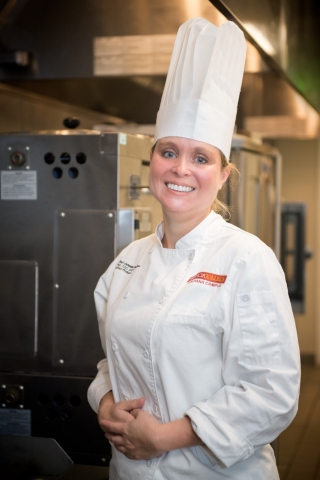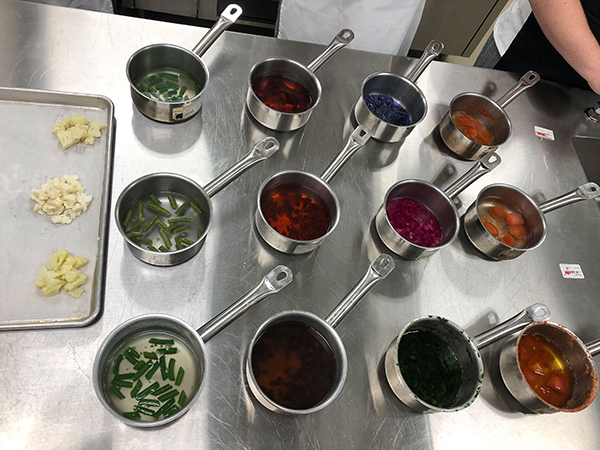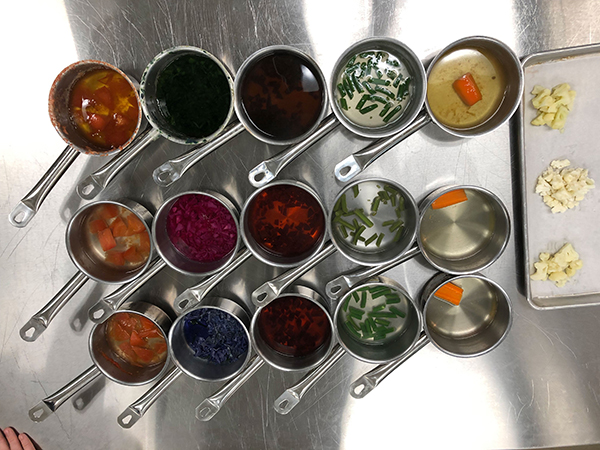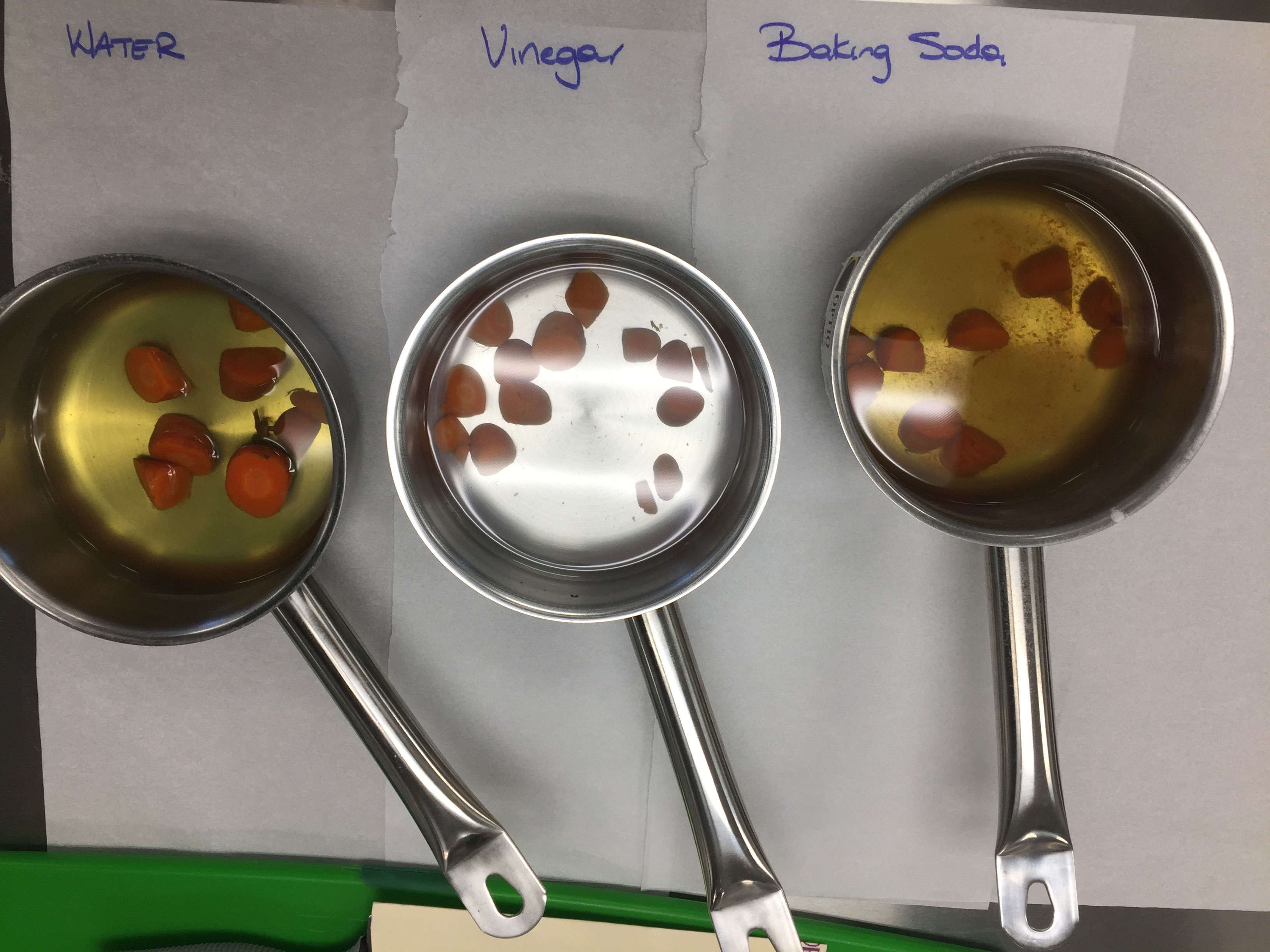
You First Eat with Your Eyes
30 April 2021The visual principles of vegetable cookery.
By Dr. Jennifer M. Denlinger, CCC, CHEP
 One of the most basic techniques we teach early in a culinary education is how to prepare vegetables. Students practice their knife skills, striving for the perfect precision cut. They practice over and over and over again. Their bits and bobs can then be prepared in every imaginable form. The students turn these veggies and fruits cut into masterful creations both sweet and savory as they work their way through the kitchen learning braising and boiling, grilling and baking.
One of the most basic techniques we teach early in a culinary education is how to prepare vegetables. Students practice their knife skills, striving for the perfect precision cut. They practice over and over and over again. Their bits and bobs can then be prepared in every imaginable form. The students turn these veggies and fruits cut into masterful creations both sweet and savory as they work their way through the kitchen learning braising and boiling, grilling and baking.
It is a common practice to recognize people eat with their eyes first. Beautiful, bright, and luscious stacks of juicy, seasonal delights are meant to bring interest and appeal to the plate and palate. The preparation techniques are endless with different vegetable varieties having different preferred treatments.
It is a trick teaching students to properly prepare produce in a way that is both pleasing to the plate and palette. Not only must it taste delicious, but it must look like it was masterfully prepared. A fun activity is teaching students different ways of preparing vegetables and looking at the preparation’s effect on the food. In other words, teaching students that food must taste good and also be visually appealing.
In this activity, I have students cook produce either with an added acid, added alkali or overcooked in water. They then have a chance to compare and contrast the different effects of heat, time, acid and alkali on various vegetable cuts. When students see the preparation effects, they can make better-informed decisions on how to get the vegetables to the plate in the manner they wish to present. It also makes an awesome rainbow display in the culinary classroom.
Vegetable pigment groups and cooking techniques
Depending on the size and involvement of the class, I usually break students into teams based on the different plant pigmentation:
- Flavonoid (white/yellow) - potatoes, turnips, cauliflower, onions, white cabbage
- Chlorophyll (green) –too many to list
- Carotenoid (orange, yellow) - tomatoes, carrots, rutabagas, sweet potatoes, squash, corn
- Anthocyanin (red/purple) - beets, red cabbage, blueberries
 Each team cuts their vegetables and boils them with water and baking soda, water and vinegar and plain water. The vegetables’ finished colors are cross referenced to color coding charts. These charts are paint chips from a hardware store, in which I simply numbered each corner as a reference. These are used for references when writing their rubrics as to the desired color of a cooking technique.
Each team cuts their vegetables and boils them with water and baking soda, water and vinegar and plain water. The vegetables’ finished colors are cross referenced to color coding charts. These charts are paint chips from a hardware store, in which I simply numbered each corner as a reference. These are used for references when writing their rubrics as to the desired color of a cooking technique.
Students display the pans when finished and we compare cooking notes and discuss the best ways to get the desired results. This activity can be done all at once, or each pigmentation can be done as it is covered in class.
Chef Jennifer M. Denlinger, PhD., CCC, CHEP, is the Culinary Management Program Department Chair at the Poinciana Campus of Valencia College. She is also the vice president of ACF’s Central Florida Chapter. Additionally, Chef Denlinger earned the 2020 Innovation Award, sponsored by CAFÉ and the Idaho Potato Commission, for a creative escape room based on safe food handling procedures.
